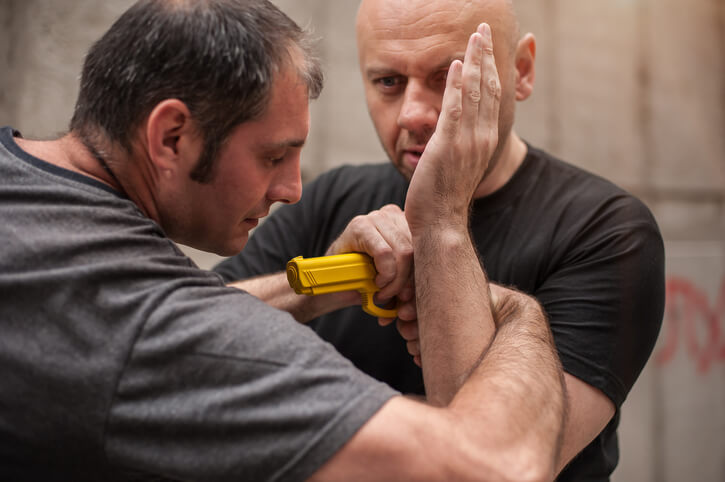Types of Firearms Training in Florida
Jan 15th 2018

Firearms training is recommended for all gun owners and enthusiasts and required for concealed carry licenses. Six Maritime offers several gun training classes beyond a basic skills course for shooters of all levels to improve their skills and knowledge.
Firearm Handling Skills
Firearm handling skills are the fundamental basis for any gun owner or gun enthusiast. Training in this area includes loading and unloading the firearm, sight alignment and sight picture, and other fundamental skills. Depending on the course for gun training in Gainesville you choose, a firearm may or may not be fired. Muzzle discipline and target analysis will be included in live fire training. Here are three drills to practice your firearm handling skills regardless of experience and skill level.
Dry Fire
Dry firing gives practice and improvement on trigger control without a cartridge or shell in the firearm’s chamber. This drill is a good way to overcome flinching as the firearm fires.
Near-Middle-Far
Using three targets at three different ranges, you’ll take one shot at each starting with the target closest to you. After three shots, reverse and take a single shot at each beginning with the furthest target. The near-middle-far drill requires you to correct the sight picture with each shot. Over time this forces the shooter to use the front sight more quickly, improving accuracy.
Breath Control
Though rifle shooters generally benefit the most from breath control, anyone using a firearm will find their shot accuracy improves through this drill. Keep any technique you use to breathe simple and focus on your breath and bringing in an ample amount of oxygen.
Training Using Decision-Making
Training using decision-making takes what is learned in a classroom setting and applies it to live scenarios and situations. As a gun owner, being able to combine judgment and skills in a real-life situation may never happen, but if it does, you want to know what to do. Scenarios covered in this type of training include shoot/no shoot, moving to cover after selecting an appropriate area, threat identification and prioritization.
Training In Combined Skills
Combined skills takes the skills learned in basic firearm handling and decision-making and puts them together in various scenarios and situations. It can be through moving and shooting, defensive tactics and shooting, or another combination of skills. Many agencies, such as law enforcement, use training in combined skills to ensure all members have training in a specific scenario.
Advanced Skills Training
Advanced skills training delves into different scenarios for specific situations, such as a hostage negotiation for an agency. Examples of areas covered in an advanced skills training course are threat mitigation, unarmed defense, situational awareness, and confrontation avoidance.
Safety When Training Alone & On The Range
Whether some time has passed since you took a gun safety course or you’re looking to get a headstart on information, here are some tips on staying safe when training alone and on the range.
Training Alone
When you practice firearms training alone, such as at your home, it’s up to you to follow the safety guidelines and practices learned during gun training classes.
Only Point At Your Intended Target
This can be considered the most basic safety rule. If there was an accidental discharge, no injury or damage would be possible as long as the gun was pointed in a safe direction. However, this rule should be followed even when the firearm is unloaded.
Keep A Firearm Unloaded When Not In Use
Not only does an unloaded firearm reduce the risk of an accident while you’re handling it, but the risk also drops dramatically for other people and property. Always open the action and check the chamber before handing a firearm to another person.
Know Your Target & What’s Beyond It
If you happen to miss your target, what could the bullet strike well beyond it? Depending on the firearm used and type of bullet, slug, or cartridge, it can at least travel 500 yards with some upwards of three miles.
On The Range
Etiquette and safety go hand-in-hand when firearm training on the range. Make a good impression on fellow gun owners and enthusiasts by following these tips.
Stay Up On The Shooting Line
By staying up on the shooting line, you’re closer to the target and not firing from behind those who are up on the line.
Use A Shooting Bag
Carrying your gun and shooting gear in a shooting bag isn’t only for your convenience, but yours and others around you’s safety.
Put Your Best Foot Forward
This is literal and figurative. You’ll want to put your best foot forward on the shooting line when you take a shot, but not when you turn around from the line. At any time turning around is necessary, put your gun on the table facing down range then turn around.




